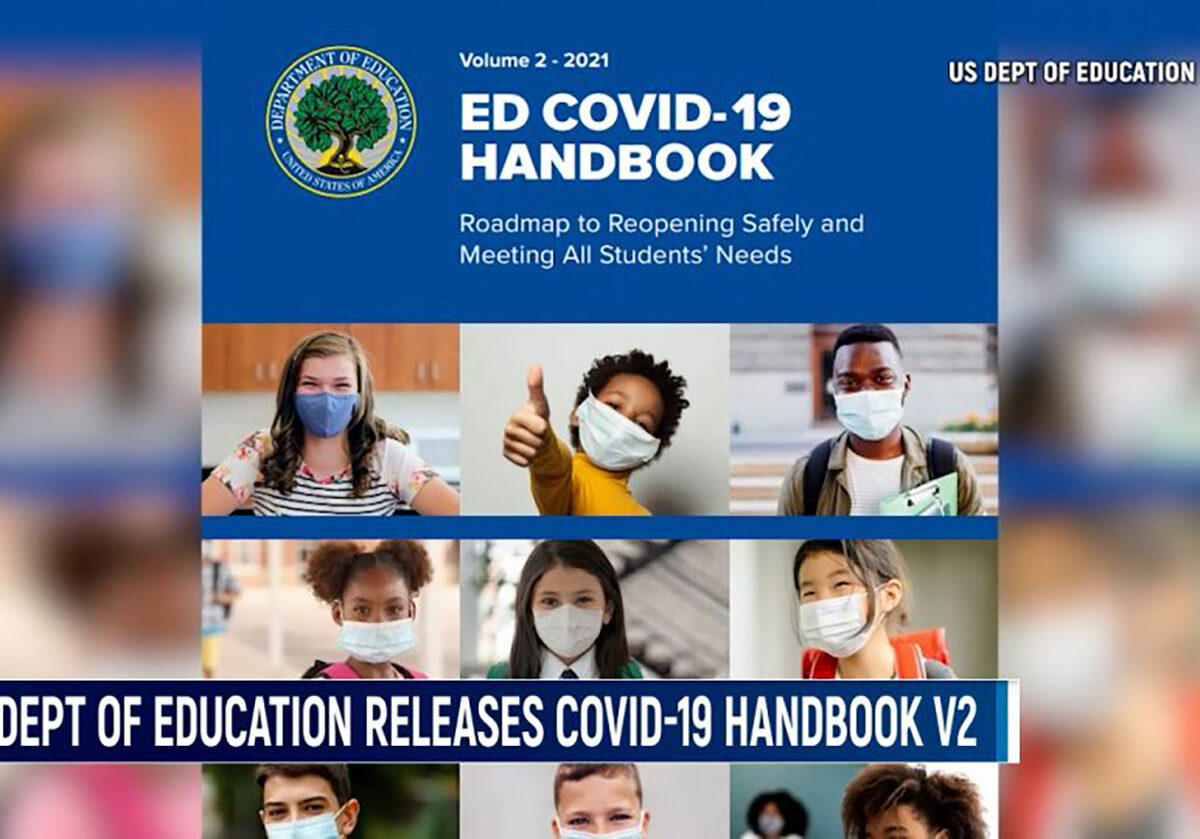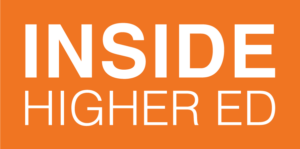
APRIL 9, 2021Contact: Press Office, (202) 401-1576, [email protected]
Today, the U.S. Department of Education (Department) released the COVID-19 Handbook, Volume 2: Roadmap to Reopening Safely and Meeting All Students’ Needs to provide additional strategies for safely reopening all of America’s schools and to promote educational equity by addressing opportunity gaps that have been exacerbated by the pandemic.
Building off of Volume 1: Strategies for Safely Reopening Elementary and Secondary Schools, which focused on health and safety measures that schools can use to successfully implement the Centers for Disease Control and Prevention’s (CDC) K-12 Operational Strategy, Volume 2 of the Handbook focuses on research-based strategies to address the social, emotional, mental-health, and academic impacts of the pandemic on students, educators, and staff, such as how to address any potential anxiety or depression some may face as a result of the COVID-19 pandemic and nearly a year of remote learning.
“There is simply no substitute for in-person learning,” said U.S. Secretary of Education Miguel Cardona. “But as schools reopen their doors, we must also make sure that we are meeting students’ social, emotional, physical, mental-health, and academic needs, and addressing gaps that existed before—and were exacerbated by—the pandemic. This is an opportunity for us to not only reopen our schools safely, but to make sure our education systems are truly serving all our nation’s students.”
Today’s release is part of the Biden-Harris Administration’s broader effort to provide states, districts, schools, and communities with the resources and support they need to return to in-person learning safely and quickly, and achieve the President’s goal of reopening a majority of K-8 schools within the first 100 days of the Administration. Volume 2 identifies strategies states, districts, schools, and communities can use when implementing funding they have received from the American Rescue Plan, which invests $130 billion in safely reopening schools, sustaining their safe in-person operation, and addressing the impact of COVID-19.
Volume 2 also aims to meet President Biden’s call for communities and the country to “build back better.” As states and districts continue to reopen schools safely, the Department is encouraging communities to implement strategies that address the social, emotional, and mental-health needs of students, including the disproportionate toll COVID-19 has had on underserved communities, and address inequities in our education system that predate and have been made worse by the pandemic.
In February, the Department released Volume 1 of the COVID-19 Handbook, which provides educators and staff with practical examples, roadmaps, and tools to implement the CDC’s K-12 operational strategy for in-person learning, including the recommended five key mitigation measures (universal and correct use of masks; physical distancing; handwashing and respiratory etiquette; maintaining clean and healthy facilities, including through ventilation; and contact tracing in combination with isolation and quarantine).
Since the release of Volume 1, the Department and CDC have met with educators; state and local elected officials, including governors, mayors, and legislative leaders in every state and territory; chief state school officers; state boards of education; and stakeholder organizations across the country about how to safely reopen schools. Volume 2 includes many strategies and resources informed by these conversations and recommended by education, civil rights, and research organizations.
As part of the launch of Volume 2, Secretary Cardona will hold a virtual roundtable with a diverse group of students and parents today, Friday, April 9, to discuss how the COVID-19 pandemic has affected their education and their lives, and how the tools and resources in Volume 2 of the handbook can help assist schools and communities in addressing student needs.
Strategies described in Volume 2 can be supported by funding under the American Rescue Plan. Each section provides strategies and considerations for meeting the needs of underserved students. The sections include:
- Providing school meals regardless of educational setting.
- Meeting the social, emotional, and mental-health needs of students.
- Providing all students with access to a safe and inclusive learning environment.
- Accelerating learning through in-classroom instructional approaches, tutoring, and expanded learning time.
- Supporting equitable access and effective use of technology for teaching and learning.
- Using data about students’ opportunities to learn to help target resources and support.
- Addressing resource inequities.
- Stabilizing a diverse and qualified educator workforce.
- Supporting educator and staff well-being.
The Department will continue to provide support and resources to schools and communities as they work to return to in-person instruction safely. Later this month, the Department will launch its “Safer Schools and Campuses Best Practices Clearinghouse,” which is open for submissions from states, schools, districts, and individuals nationwide. Once launched, the Clearinghouse will highlight lessons learned and best practices that can help schools and districts identify opportunities to utilize American Rescue Plan funds to meet their unique needs.










